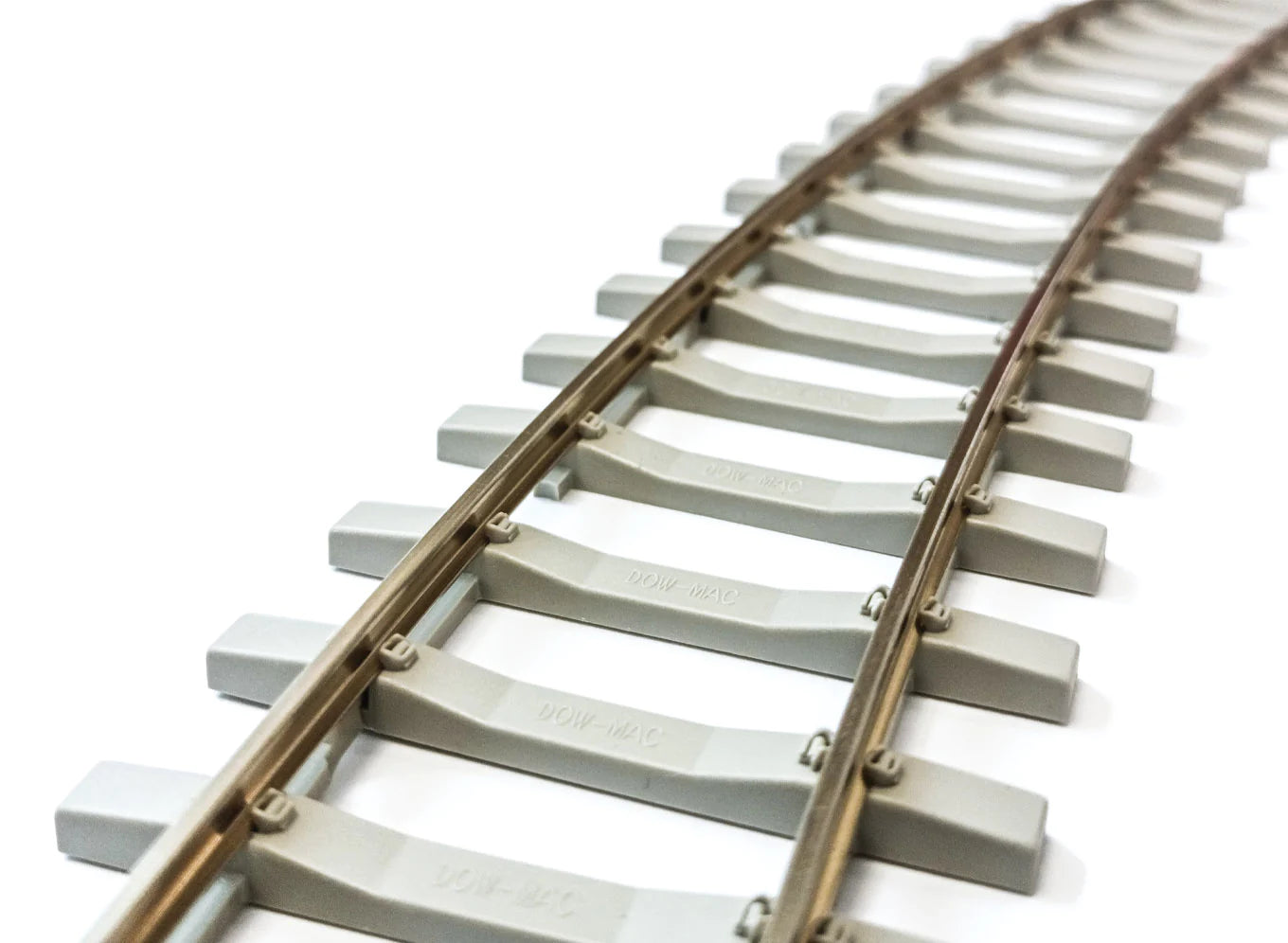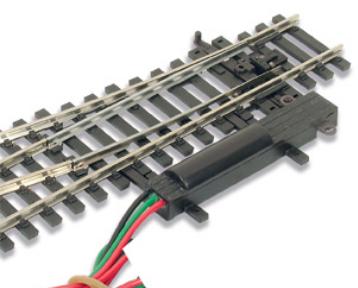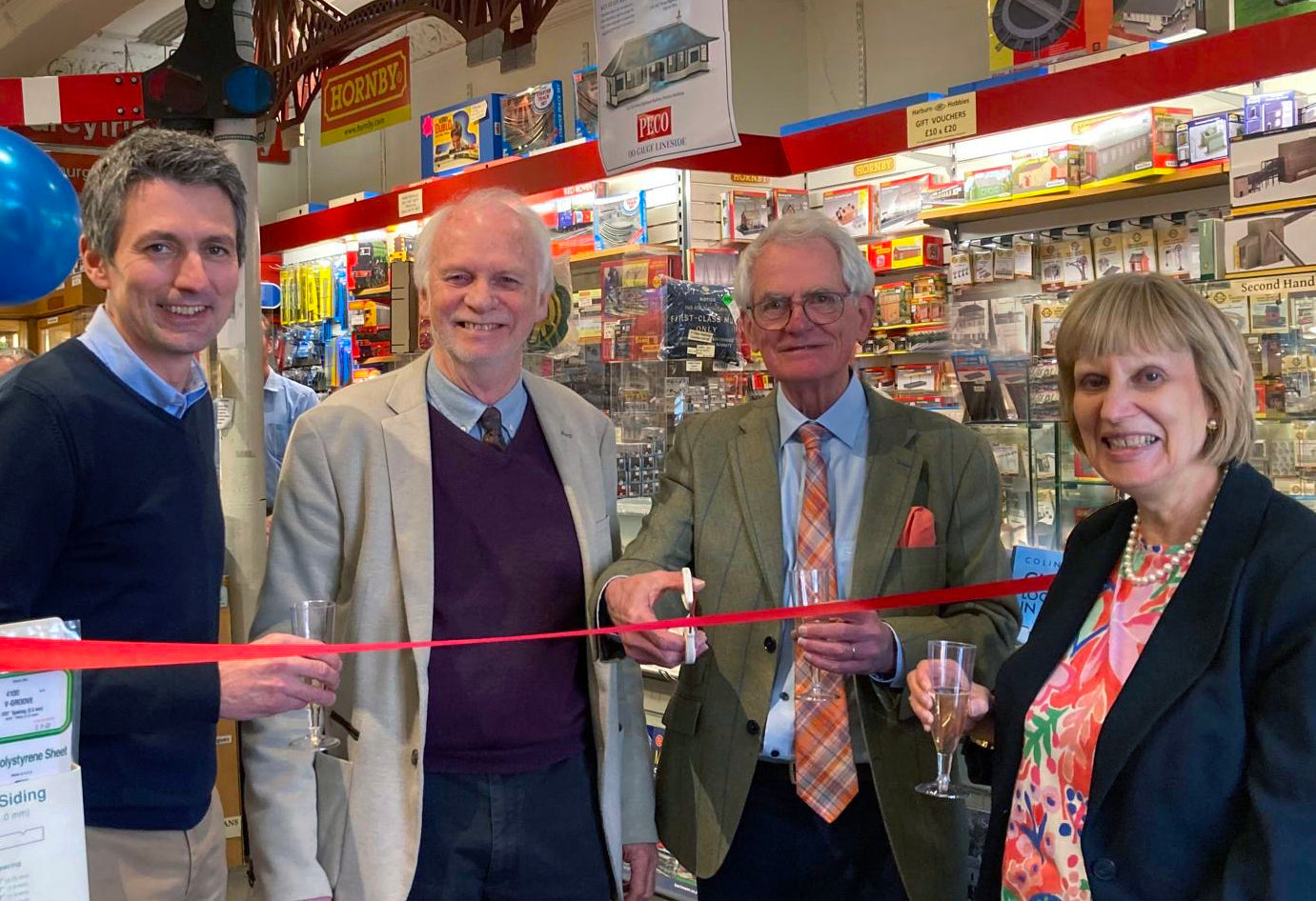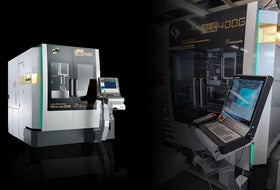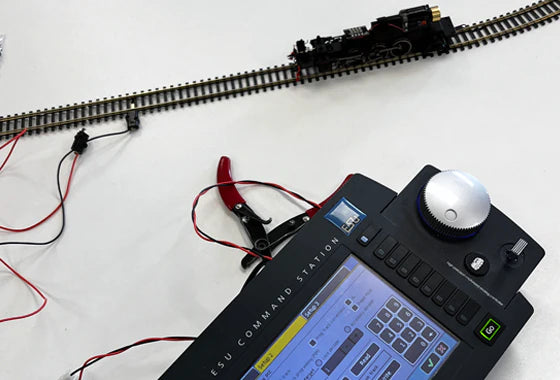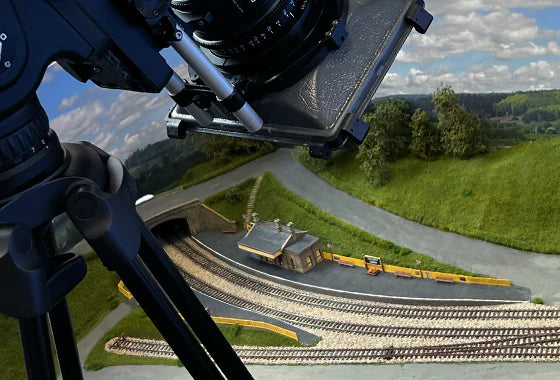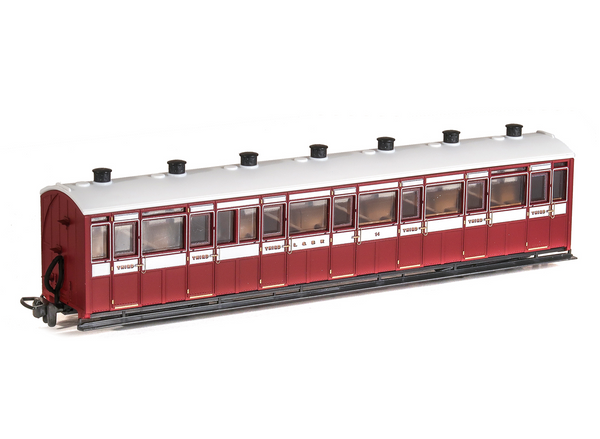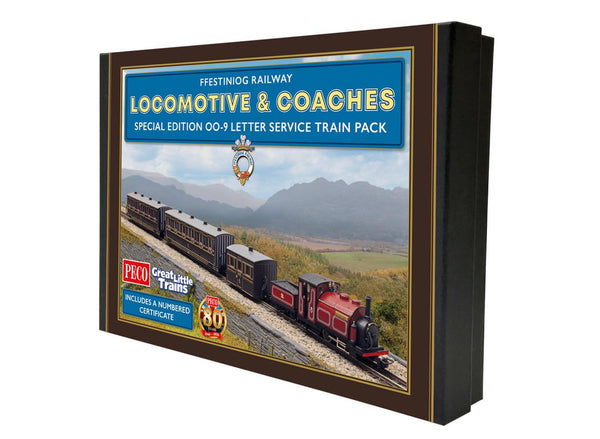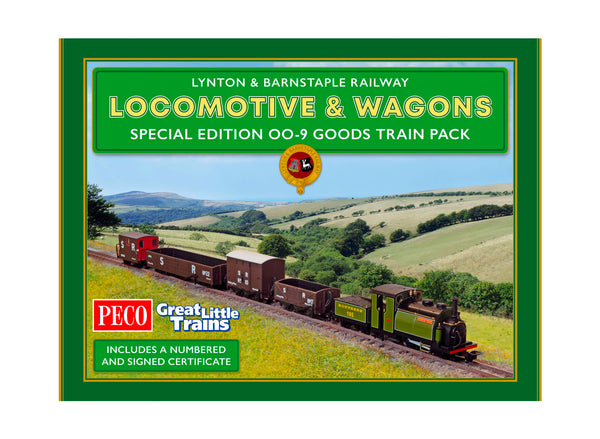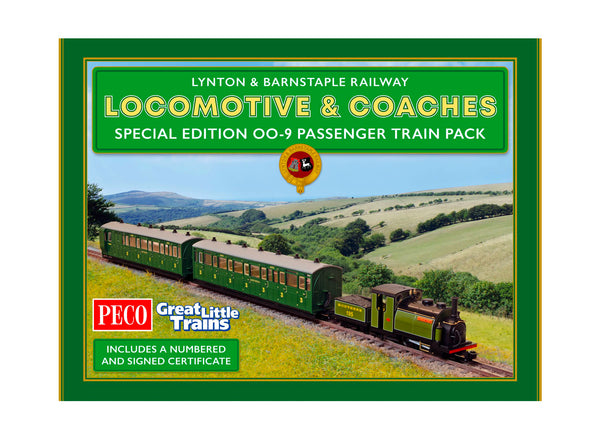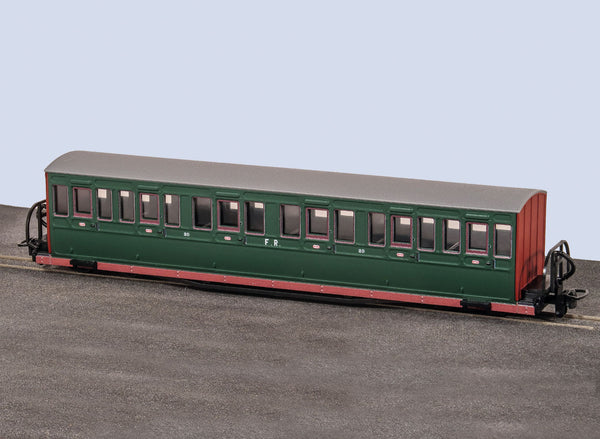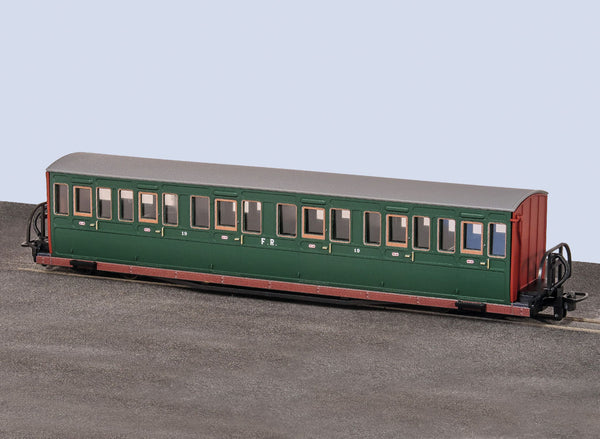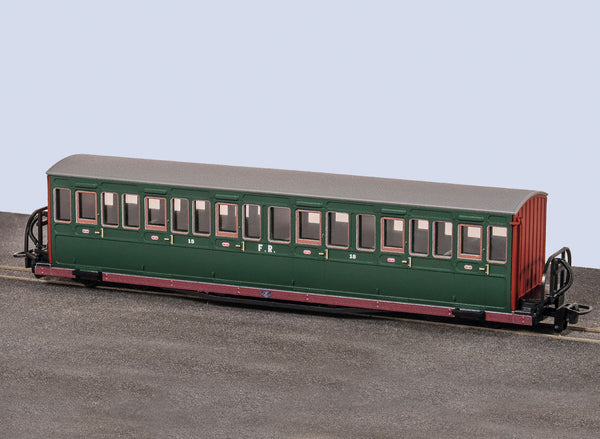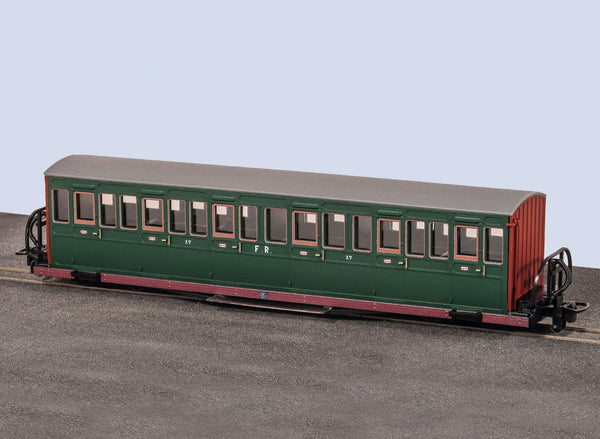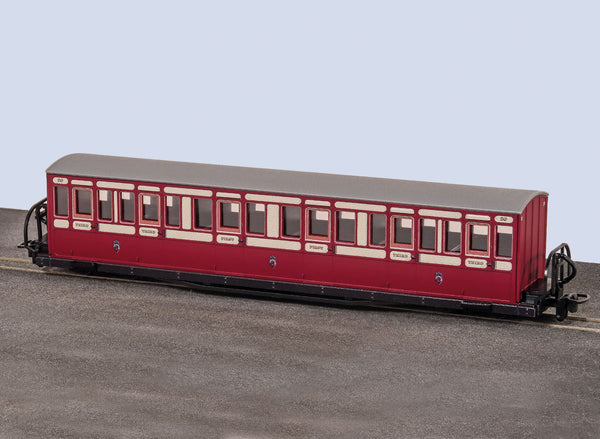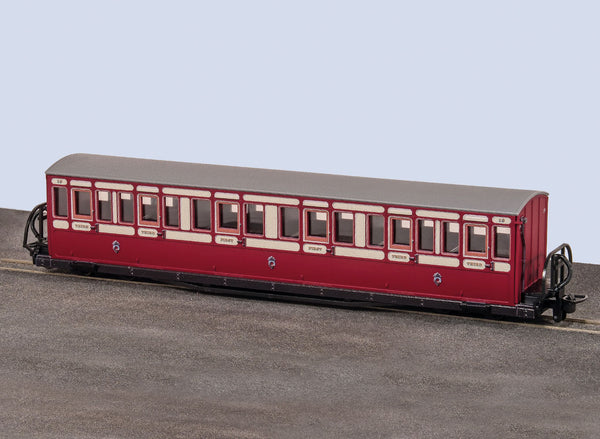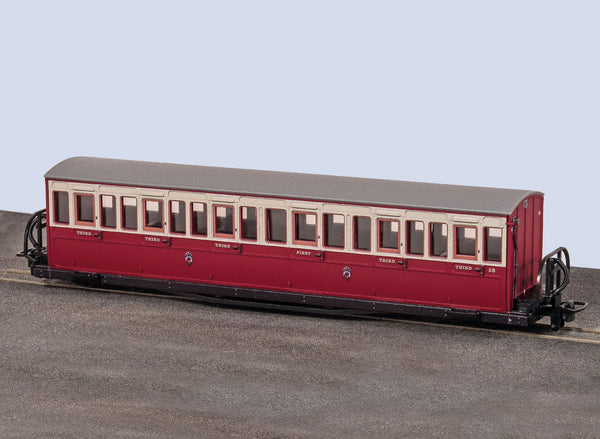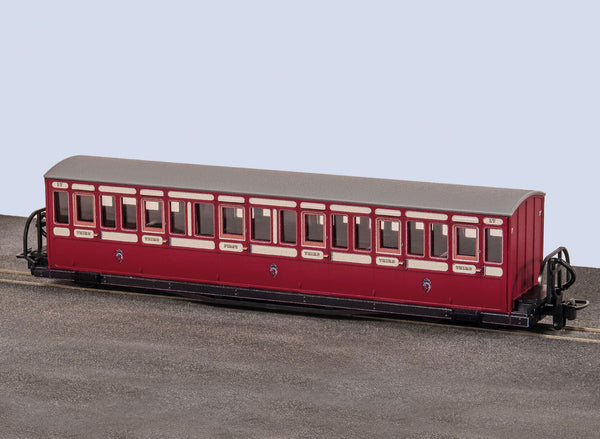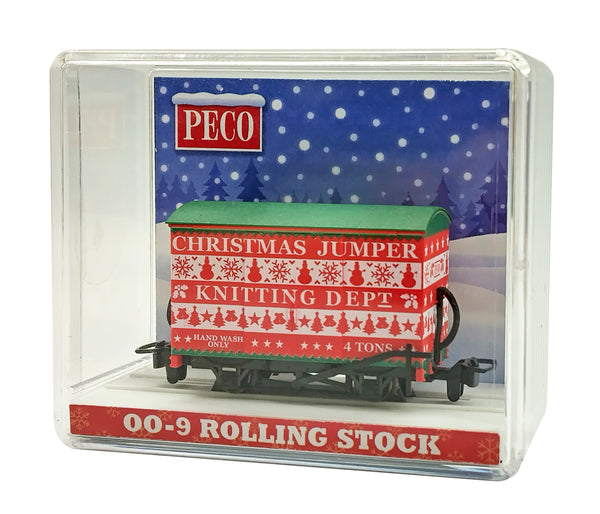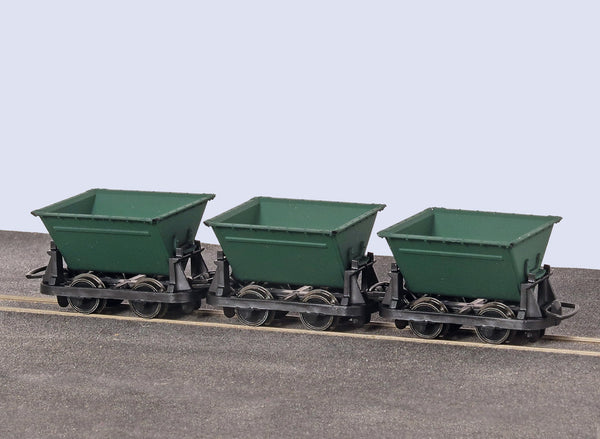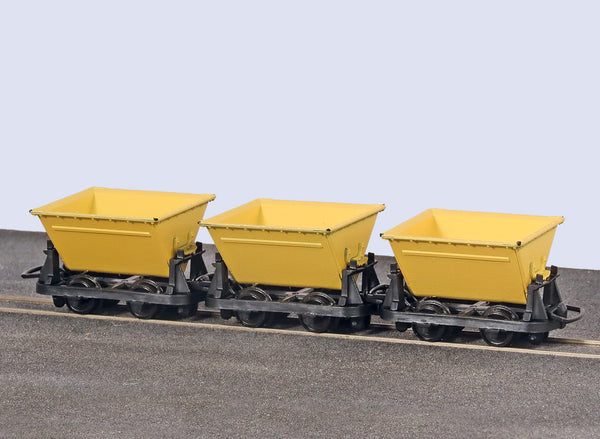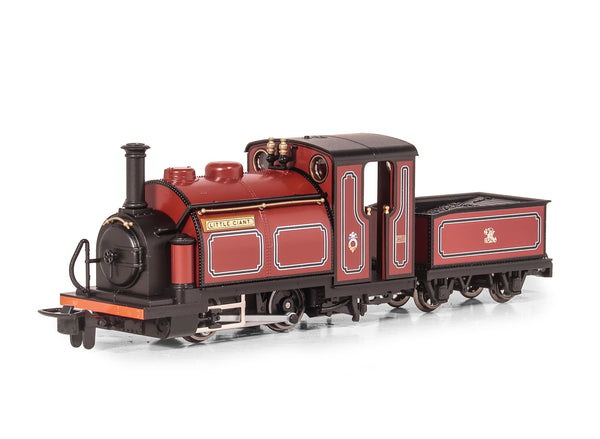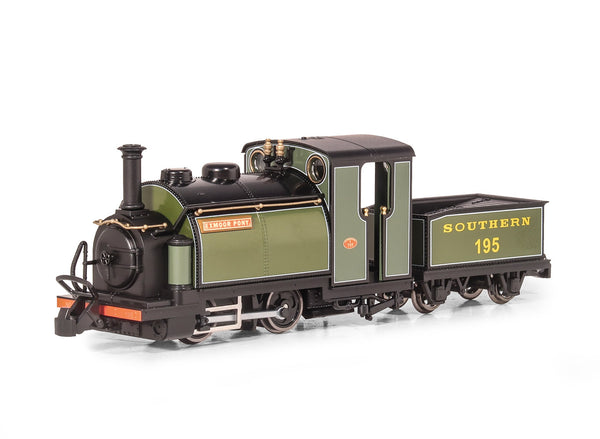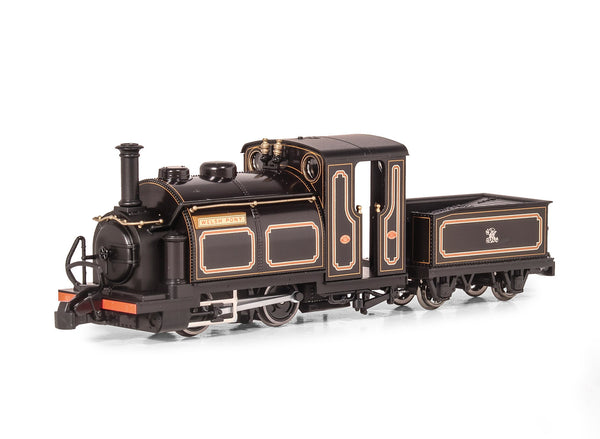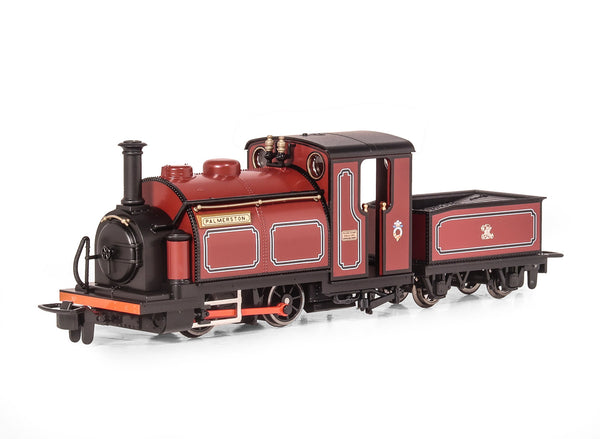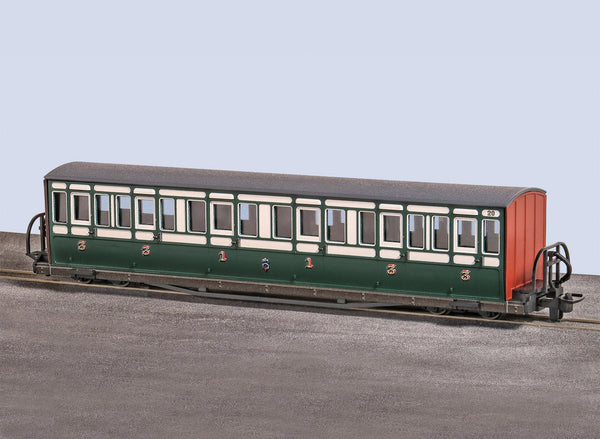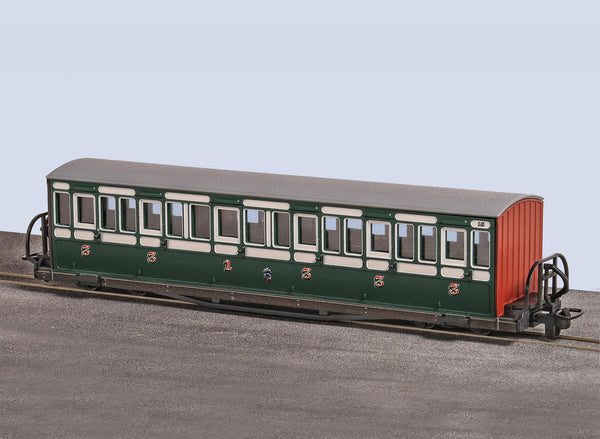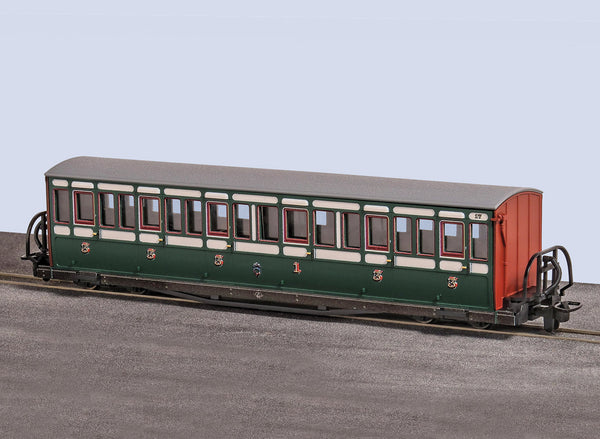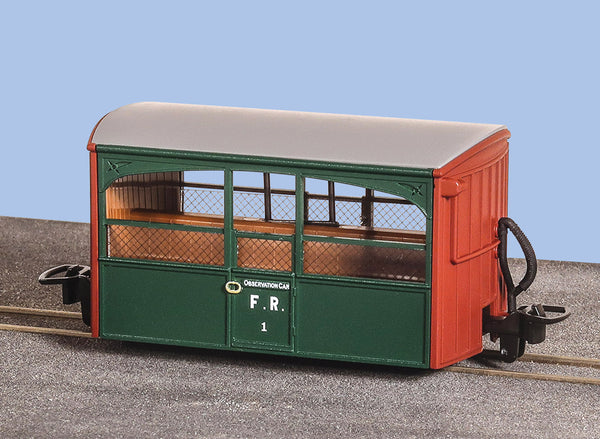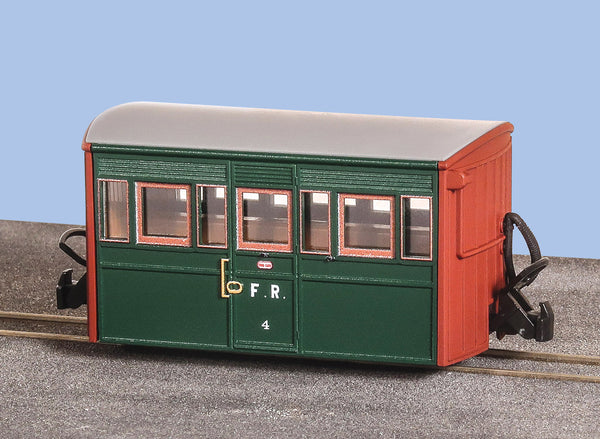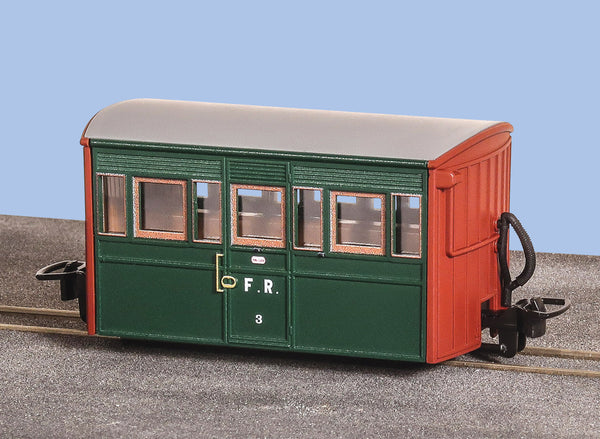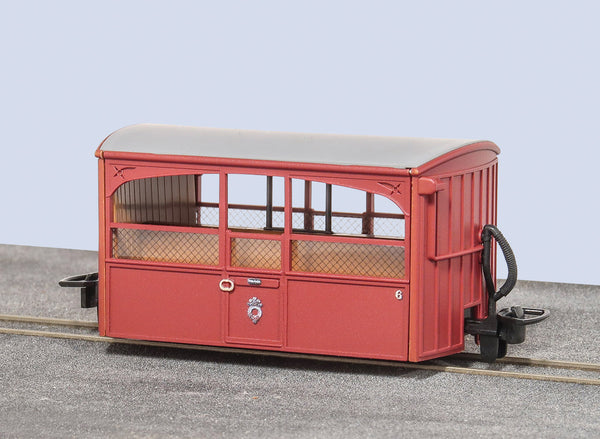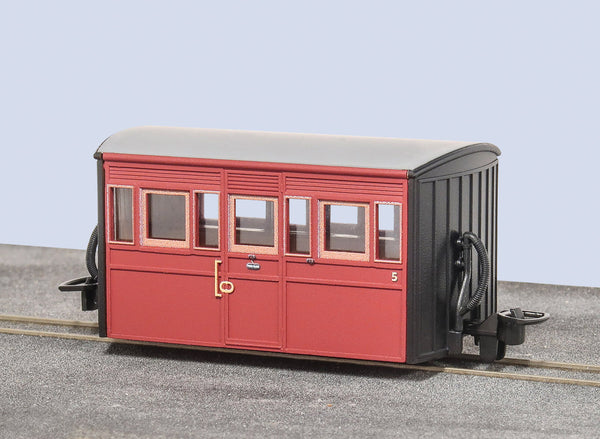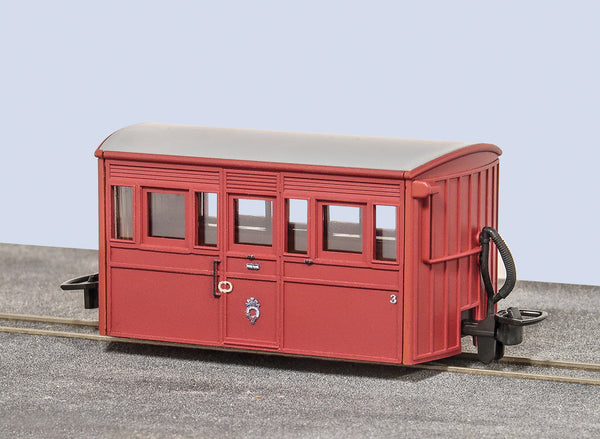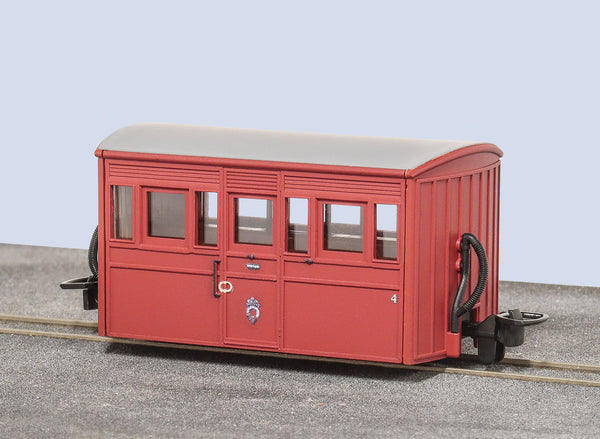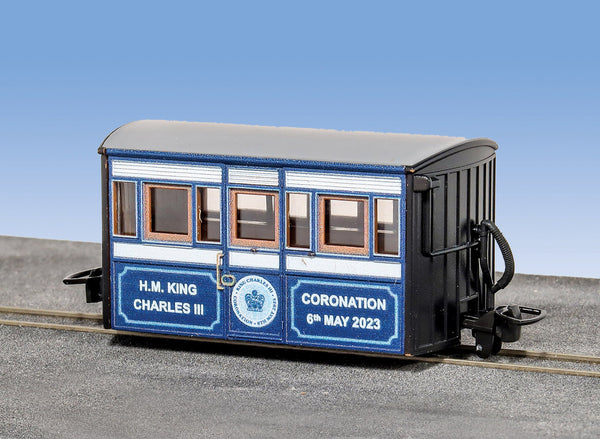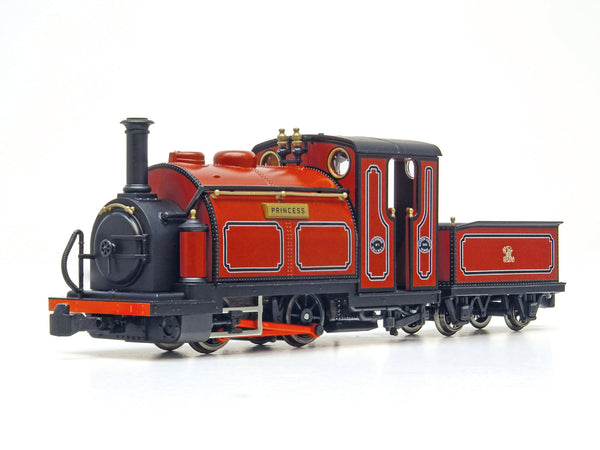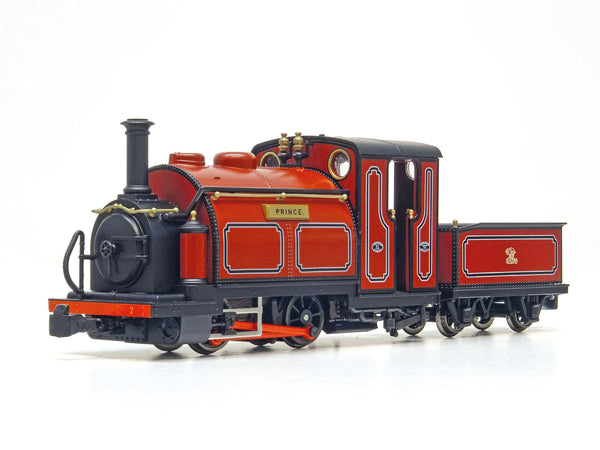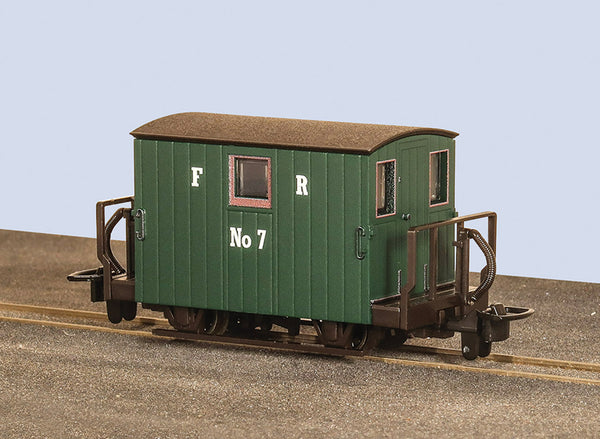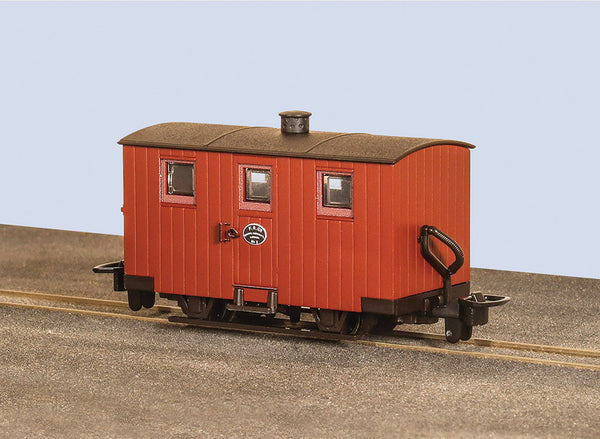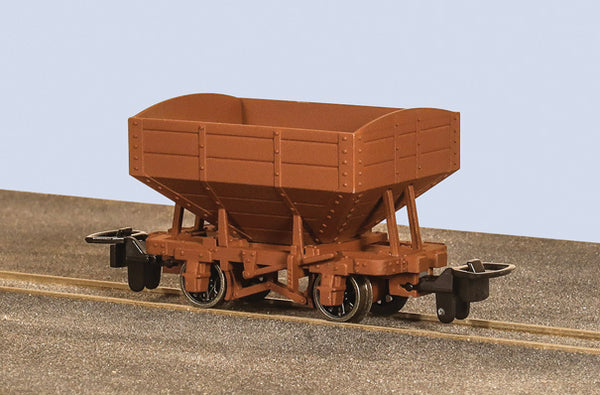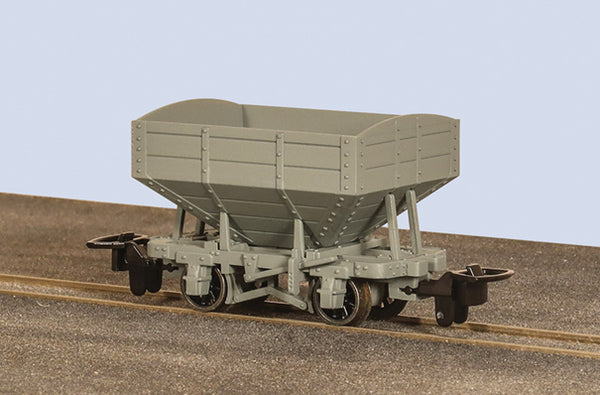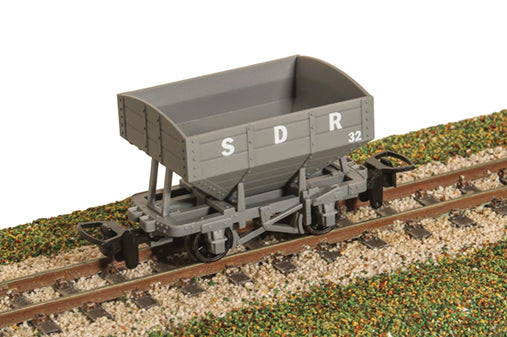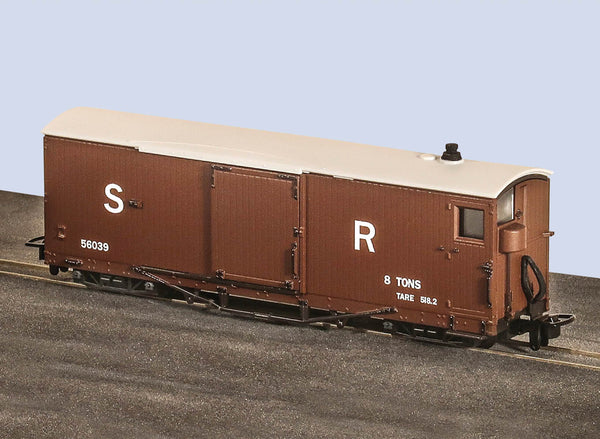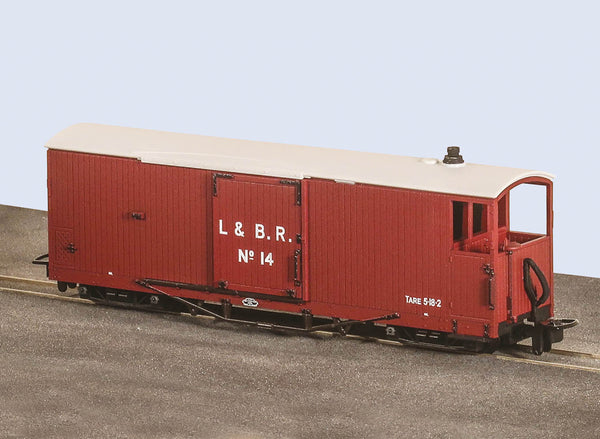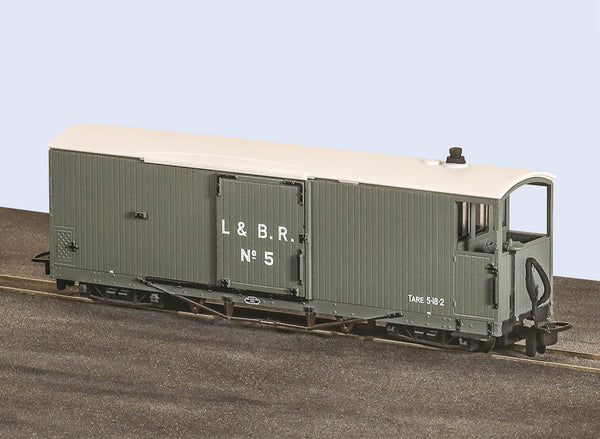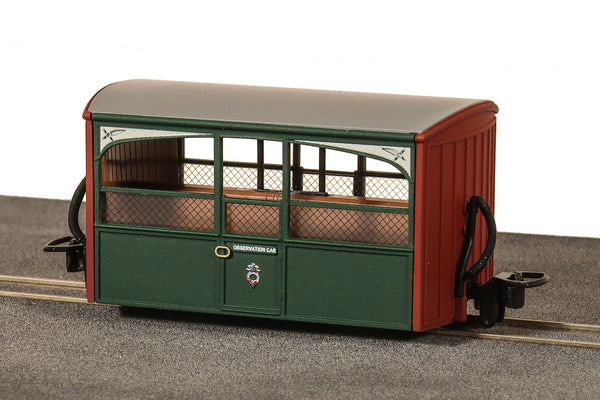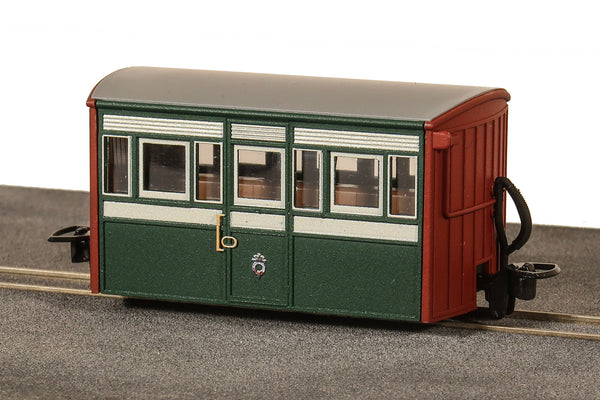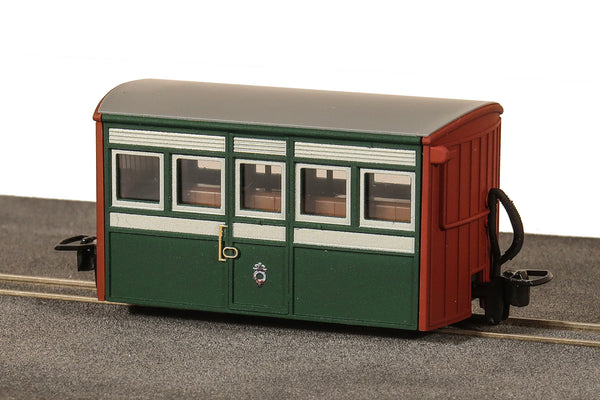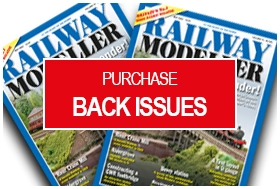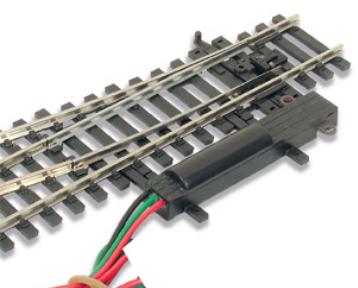BROWSE PECO PRODUCTS
Browse through our complete product portfolio.
122 Products Found
OO-9 All 3rd Coach Lynton and Barnstaple Livery No 14
These finely detailed ready to run coaches and wagons are accurately modelled on the rolling stock of the Lynton and Barnstaple Railway, both as an independent railway and after its' absorption into the Southern railway in 1922. They are also available painted but unlettered for those modellers who wish to tailor them for use on other lines.
Special Edition OO-9 Letter Service Train Pack (Ffestiniog Railway)
The Ffestiniog Railway, located in North Wales, is the world’s oldest surviving independent railway company, founded in 1832. Originally built to transport slate from the quarries of Blaenau Ffestiniog to the port at Porthmadog, it was engineered with a unique narrow gauge of just 1 ft 11½ in (597 mm), ideal for winding through the rugged Snowdonia landscape. Innovative features included gravity-powered slate trains running downhill and horses hauling the wagons back uphill.
In the 1860s, steam locomotives were introduced, making the Ffestiniog the first narrow-gauge railway in the world to successfully use them. After declining slate demand led to closure in 1946, dedicated volunteers began restoring the line in the 1950s. Today, it runs as a popular heritage railway, linking Porthmadog to Blaenau Ffestiniog once again, and is celebrated for its pioneering engineering, scenic beauty, and remarkable preservation story.
These latest PECO train packs celebrate that legacy with attention to authenticity and a passion for detail.
Special Edition OO-9 Press Train Pack (Welsh Highland Railway)
The Ffestiniog Railway, located in North Wales, is the world’s oldest surviving independent railway company, founded in 1832. Originally built to transport slate from the quarries of Blaenau Ffestiniog to the port at Porthmadog, it was engineered with a unique narrow gauge of just 1 ft 11½ in (597 mm), ideal for winding through the rugged Snowdonia landscape. Innovative features included gravity-powered slate trains running downhill and horses hauling the wagons back uphill.
In the 1860s, steam locomotives were introduced, making the Ffestiniog the first narrow-gauge railway in the world to successfully use them. After declining slate demand led to closure in 1946, dedicated volunteers began restoring the line in the 1950s. Today, it runs as a popular heritage railway, linking Porthmadog to Blaenau Ffestiniog once again, and is celebrated for its pioneering engineering, scenic beauty, and remarkable preservation story.
These latest PECO train packs celebrate that legacy with attention to authenticity and a passion for detail.
Special Edition OO-9 Goods Train Pack
Inspired by one of Britain’s most beloved narrow-gauge railways – the Lynton & Barnstaple, these exclusive new packs feature the beautifully detailed KATO Large England locomotive “Exmoor Pony” paired with unique-liveried rolling stock – only available in these sets and not sold separately.
Each pack comes in a smart, collector-style presentation box, complete with custom packaging and a striking outer sleeve – perfect for displaying or gifting.
Special Edition OO-9 Passenger Train Pack
Inspired by one of Britain’s most beloved narrow-gauge railways – the Lynton & Barnstaple, these exclusive new packs feature the beautifully detailed KATO Large England locomotive “Exmoor Pony” paired with unique-liveried rolling stock – only available in these sets and not sold separately.
Each pack comes in a smart, collector-style presentation box, complete with custom packaging and a striking outer sleeve – perfect for displaying or gifting.
FR Long 'Bowsider' Coach - Colonel Stephens No.20
The Ffestiniog Railway operated two pairs of bogie coaches numbered 17-20 and built by Brown Marshalls & Co and Gloucester Wagon Co. They were known as ‘Bowsiders’ because of the tumblehome shape of their sides. Numbers 17 and 18, built in 1876 are shorter with one 1st class compartment. Numbers 19 and 20, built in 1879 are longer with two 1st class compartments. All four are still in service on the Ffestiniog Railway today.
In the 1920s the elaborate liveries of the Victorian era were replaced with a simple scheme of green with red end panels. It became known as the ‘Colonel Stephens’ livery, after the General Manager of the Ffestiniog Railway from 1925 until his passing in 1931. The colour scheme was used until the end of passenger operations in 1939, sometimes alongside other colours such as yellow, in the mid 1930s.
Green with red ends was applied to carriage No.20 once again from 2005 until 2024, as depicted by GR-623B.
FR Long 'Bowsider' Coach - Colonel Stephens No.19
The Ffestiniog Railway operated two pairs of bogie coaches numbered 17-20 and built by Brown Marshalls & Co and Gloucester Wagon Co. They were known as ‘Bowsiders’ because of the tumblehome shape of their sides. Numbers 17 and 18, built in 1876 are shorter with one 1st class compartment. Numbers 19 and 20, built in 1879 are longer with two 1st class compartments. All four are still in service on the Ffestiniog Railway today.
In the 1920s the elaborate liveries of the Victorian era were replaced with a simple scheme of green with red end panels. It became known as the ‘Colonel Stephens’ livery, after the General Manager of the Ffestiniog Railway from 1925 until his passing in 1931. The colour scheme was used until the end of passenger operations in 1939, sometimes alongside other colours such as yellow, in the mid 1930s.
Green with red ends was applied to carriage No.20 once again from 2005 until 2024, as depicted by GR-623B.
FR Short 'Bowsider' Coach - Colonel Stephens No.18
The Ffestiniog Railway operated two pairs of bogie coaches numbered 17-20 and built by Brown Marshalls & Co and Gloucester Wagon Co. They were known as ‘Bowsiders’ because of the tumblehome shape of their sides. Numbers 17 and 18, built in 1876 are shorter with one 1st class compartment. Numbers 19 and 20, built in 1879 are longer with two 1st class compartments. All four are still in service on the Ffestiniog Railway today.
In the 1920s the elaborate liveries of the Victorian era were replaced with a simple scheme of green with red end panels. It became known as the ‘Colonel Stephens’ livery, after the General Manager of the Ffestiniog Railway from 1925 until his passing in 1931. The colour scheme was used until the end of passenger operations in 1939, sometimes alongside other colours such as yellow, in the mid 1930s.
Green with red ends was applied to carriage No.20 once again from 2005 until 2024, as depicted by GR-623B.
FR Short 'Bowsider' Coach - Colonel Stephens No.17
The Ffestiniog Railway operated two pairs of bogie coaches numbered 17-20 and built by Brown Marshalls & Co and Gloucester Wagon Co. They were known as ‘Bowsiders’ because of the tumblehome shape of their sides. Numbers 17 and 18, built in 1876 are shorter with one 1st class compartment. Numbers 19 and 20, built in 1879 are longer with two 1st class compartments. All four are still in service on the Ffestiniog Railway today.
In the 1920s the elaborate liveries of the Victorian era were replaced with a simple scheme of green with red end panels. It became known as the ‘Colonel Stephens’ livery, after the General Manager of the Ffestiniog Railway from 1925 until his passing in 1931. The colour scheme was used until the end of passenger operations in 1939, sometimes alongside other colours such as yellow, in the mid 1930s.
Green with red ends was applied to carriage No.20 once again from 2005 until 2024, as depicted by GR-623B.
FR Long 'Bowsider' Coach - Red & Cream No.20
The Ffestiniog Railway operated two pairs of bogie coaches numbered 17-20 and built by Brown Marshalls & Co and Gloucester Wagon Co. They were known as ‘Bowsiders’ because of the tumblehome shape of their sides. Numbers 17 and 18, built in 1876 are shorter with one 1st class compartment. Numbers 19 and 20, built in 1879 are longer with two 1st class compartments. All four are still in service on the Ffestiniog Railway today.
The red and cream livery was first applied to a rake of carriages in 1987 for the ‘Mountain Prince’ train service. Carriage 20 was the first Bowsider to appear in the livery.
Carriages 17 and 18 had cream applied to the full upper half of the carriage. 17 had the mouldings reinstated in 1990 as depicted by GR-602A. 18 continued to have cream across the upper half throughout its time in the scheme, as represented by GR-602B. Note the ‘Brown Marshalls & Co. Ltd’ builders plate printed on the ends of the carriage.
All four Bowsiders were repainted into historic liveries in the 2000s, but the red and cream colour scheme is still seen today on the more modern carriages
FR Long 'Bowsider' Coach - Red & Cream No.19
The Ffestiniog Railway operated two pairs of bogie coaches numbered 17-20 and built by Brown Marshalls & Co and Gloucester Wagon Co. They were known as ‘Bowsiders’ because of the tumblehome shape of their sides. Numbers 17 and 18, built in 1876 are shorter with one 1st class compartment. Numbers 19 and 20, built in 1879 are longer with two 1st class compartments. All four are still in service on the Ffestiniog Railway today.
The red and cream livery was first applied to a rake of carriages in 1987 for the ‘Mountain Prince’ train service. Carriage 20 was the first Bowsider to appear in the livery.
Carriages 17 and 18 had cream applied to the full upper half of the carriage. 17 had the mouldings reinstated in 1990 as depicted by GR-602A. 18 continued to have cream across the upper half throughout its time in the scheme, as represented by GR-602B. Note the ‘Brown Marshalls & Co. Ltd’ builders plate printed on the ends of the carriage.
All four Bowsiders were repainted into historic liveries in the 2000s, but the red and cream colour scheme is still seen today on the more modern carriages
FR Short 'Bowsider' Coach - Red & Cream No.18
The Ffestiniog Railway operated two pairs of bogie coaches numbered 17-20 and built by Brown Marshalls & Co and Gloucester Wagon Co. They were known as ‘Bowsiders’ because of the tumblehome shape of their sides. Numbers 17 and 18, built in 1876 are shorter with one 1st class compartment. Numbers 19 and 20, built in 1879 are longer with two 1st class compartments. All four are still in service on the Ffestiniog Railway today.
The red and cream livery was first applied to a rake of carriages in 1987 for the ‘Mountain Prince’ train service. Carriage 20 was the first Bowsider to appear in the livery.
Carriages 17 and 18 had cream applied to the full upper half of the carriage. 17 had the mouldings reinstated in 1990 as depicted by GR-602A. 18 continued to have cream across the upper half throughout its time in the scheme, as represented by GR-602B. Note the ‘Brown Marshalls & Co. Ltd’ builders plate printed on the ends of the carriage.
All four Bowsiders were repainted into historic liveries in the 2000s, but the red and cream colour scheme is still seen today on the more modern carriages
FR Short 'Bowsider' Coach - Red & Cream No.17
The Ffestiniog Railway operated two pairs of bogie coaches numbered 17-20 and built by Brown Marshalls & Co and Gloucester Wagon Co. They were known as ‘Bowsiders’ because of the tumblehome shape of their sides. Numbers 17 and 18, built in 1876 are shorter with one 1st class compartment. Numbers 19 and 20, built in 1879 are longer with two 1st class compartments. All four are still in service on the Ffestiniog Railway today.
The red and cream livery was first applied to a rake of carriages in 1987 for the ‘Mountain Prince’ train service. Carriage 20 was the first Bowsider to appear in the livery.
Carriages 17 and 18 had cream applied to the full upper half of the carriage. 17 had the mouldings reinstated in 1990 as depicted by GR-602A. 18 continued to have cream across the upper half throughout its time in the scheme, as represented by GR-602B. Note the ‘Brown Marshalls & Co. Ltd’ builders plate printed on the ends of the carriage.
All four Bowsiders were repainted into historic liveries in the 2000s, but the red and cream colour scheme is still seen today on the more modern carriages
OO-9 'Christmas Jumper Dept' Box Van
PECO Model Railways has released a delightful addition to their Christmas collection with limited-edition wagons available in N and OO-9. Celebrating the festive spirit, this year’s model is dedicated to the 'Christmas Jumper Knitting Department'. Adorned in charming holiday-themed colours, the wagons feature intricate seasonal designs reminiscent of classical Christmas jumpers. Each wagon in this collection is crafted with meticulous detail, capturing the playful essence of holiday cheer in a miniature format.
Only 500 pieces are available in each scale, making these wagons truly special collector’s items for railway enthusiasts and collectors. This seasonal release adds to the PECO lineup of collectible Christmas wagons, creating an enchanting winter landscape on any model railway setup. These limited editions make perfect Christmas gifts or keepsakes and are available now, though stock won’t last long due to their exclusivity and appeal.
Hudson Rugga V-Skips (Green)
The familiar Rugga V-Skip 'tipping' wagon design was introduced in the 1930s - a development of the Robert Hudson company, based in Leeds. They could be supplied to the customer's specific requirements, with a skip size ranging from 13.5 to 54 cubic feet (0.38 to 1.53 cubic metres), and in most track gauges. The design allows the skip to tip in either direction, perfect for small industrial railways that needed to move and unload materials quickly and efficiently. The company even boasted that at any one time several thousand could be supplied from stock! These are supplied in an attractive display box of three.
Hudson Rugga V-Skips (Yellow)
The familiar Rugga V-Skip 'tipping' wagon design was introduced in the 1930s - a development of the Robert Hudson company, based in Leeds. They could be supplied to the customer's specific requirements, with a skip size ranging from 13.5 to 54 cubic feet (0.38 to 1.53 cubic metres), and in most track gauges. The design allows the skip to tip in either direction, perfect for small industrial railways that needed to move and unload materials quickly and efficiently. The company even boasted that at any one time several thousand could be supplied from stock! These are supplied in an attractive display box of three.
OO-9 Large England PECO/KATO Locomotive - 'Little Giant' (Maroon)
Available now!
Narrow gauge ready-to-run locomotives in 1:76 scale, 9mm gauge track. DC (analogue) core-less motor fitted within loco body giving smooth and reliable running. Loco and tender electrically connected – pick ups on front loco axles and two tender axles. Inner axle of loco fitted with traction tyres. Will comfortably negotiate 9inch/229mm radius curves. Fully decorated with fine lining and small details. Separate moulding supplied for handrails, and other details. Supplied fitted with standard PECO OO-9 coupling, Arnold N gauge couplings supplied separately.
Please note: DCC operation is possible with this model but it is not currently supplied as 'DCC-Ready' and will need to be carefully retro-fitted.
OO-9 Large England PECO/KATO Locomotive - 'Exmoor Pony' (SR Green)
Available now!
Narrow gauge ready-to-run locomotives in 1:76 scale, 9mm gauge track. DC (analogue) core-less motor fitted within loco body giving smooth and reliable running. Loco and tender electrically connected – pick ups on front loco axles and two tender axles. Inner axle of loco fitted with traction tyres. Will comfortably negotiate 9inch/229mm radius curves. Fully decorated with fine lining and small details. Separate moulding supplied for handrails, and other details. Supplied fitted with standard PECO OO-9 coupling, Arnold N gauge couplings supplied separately.
Please note: DCC operation is possible with this model but it is not currently supplied as 'DCC-Ready' and will need to be carefully retro-fitted.
OO-9 Large England PECO/KATO Locomotive - 'Welsh Pony' (Purple Brown)
Available now!
Narrow gauge ready-to-run locomotives in 1:76 scale, 9mm gauge track. DC (analogue) core-less motor fitted within loco body giving smooth and reliable running. Loco and tender electrically connected – pick ups on front loco axles and two tender axles. Inner axle of loco fitted with traction tyres. Will comfortably negotiate 9inch/229mm radius curves. Fully decorated with fine lining and small details. Separate moulding supplied for handrails, and other details. Supplied fitted with standard PECO OO-9 coupling, Arnold N gauge couplings supplied separately.
Please note: DCC operation is possible with this model but it is not currently supplied as 'DCC-Ready' and will need to be carefully retro-fitted.
OO-9 Small England PECO/KATO Locomotive - 'Palmerston' (Maroon)
Available now!
Narrow gauge ready-to-run locomotives in 1:76 scale, 9mm gauge track. DC (analogue) core-less motor fitted within loco body giving smooth and reliable running. Loco and tender electrically connected – pick ups on front loco axles and two tender axles. Inner axle of loco fitted with traction tyres. Will comfortably negotiate 9inch/229mm radius curves. Fully decorated with fine lining and small details. Separate moulding supplied for handrails, and other details. Supplied fitted with standard PECO OO-9 coupling, Arnold N gauge couplings supplied separately.
Please note: DCC operation is possible with this model but it is not currently supplied as 'DCC-Ready' and will need to be carefully retro-fitted.
FR Short 'Bowsider' Bogie Coach - Early Preservation - Green 20
FR Short 'Bowsider' Bogie Coach - Early Preservation - Green 18
FR Short 'Bowsider' Bogie Coach - Early Preservation - Green 19
FR Short 'Bowsider' Bogie Coach - Early Preservation - Green 17
OO-9 Bug Box coach Col. Stephens Livery, Zoo car
The next batch of our Ffestiniog Railway 4-wheel "Bug Box" coaches are now in stock. These popular models continue to sell well and this next batch will be equally as sought-after as the others. We have paid a lot of attention to the livery characteristics of these coaches, ensuring that all details are as accurate as they can be, with some very fine printing detail and authentic colours. Free-running metal-tyred wheels are now fitted as standard to all of our new OO-9 releases.
OO-9 Bug Box Coach - Colonel Stephens Livery - No.4
OO-9 Bug Box Coach - Colonel Stephens Livery - No.3
L&B 8-ton Bogie Goods Brake Van OO-9
The next new livery for the L&B Goods Brake Van is this plain grey unlettered models, aimed at the freelance modeller.
Removing all references to the Lynton and Barnstaple Railway but leaving behind the useful detail such as tare weight and builder plate will please those OO-9 modellers who want to create their own unique and individual railway in miniature.
OO-9 Bug Box Coach 1970s/80s Livery, Zoo Car
Our NEW Ffestiniog Railway "Bug Box" coaches, wearing the plain red livery from the preservation era of the 1970s & 1980s. Plain they may be, but when you look closely, you will notice that actually there is plenty of very fine detail, including the FR emblem, door handles and running numbers.
OO-9 Bug Box Coach 1970s/80s Livery, No. 5
Our NEW Ffestiniog Railway "Bug Box" coaches, wearing the plain red livery from the preservation era of the 1970s & 1980s. Plain they may be, but when you look closely, you will notice that actually there is plenty of very fine detail, including the FR emblem, door handles and running numbers.
OO-9 Bug Box Coach 1970s/80s Livery, No. 4
Our NEW Ffestiniog Railway "Bug Box" coaches, wearing the plain red livery from the preservation era of the 1970s & 1980s. Plain they may be, but when you look closely, you will notice that actually there is plenty of very fine detail, including the FR emblem, door handles and running numbers.
OO-9 Bug Box Coach 1970s/80s Livery, No. 3
Our NEW Ffestiniog Railway "Bug Box" coaches, wearing the plain red livery from the preservation era of the 1970s & 1980s. Plain they may be, but when you look closely, you will notice that actually there is plenty of very fine detail, including the FR emblem, door handles and running numbers.
00-9 "Purple Moose Brewery" L&B Box Van
Based on the Lynton & Barnstaple box van, this partially fictitious livery will chime well with fans of the Ffestiniog Railway and the wider OO-9 community. Located in Porthmadog, centre of the universe as far as Welsh narrow gauge enthusiasts are concerned, beer from the Purple Moose Brewery is popular with many visitors to the area and is the inspiration for this unique little wagon. Why not visit their website and learn for yourselves the origins of this local brewer and the tale behind the very unusual name! PURPLE MOOSE BREWERY
OO-9 BUG BOX - KING CHARLES III CORONATION 2023 - LTD EDT
Celebrating the coronation of His Majesty the King on 6th May. We have produced a limited edition model in a coronation livery for both models, incorporating the official logo for this historical event.
The curiously-named "Bug Box" 4-wheel coaches were the first passenger carrying coaches built for the Ffestiniog Railway. Dating from 1864 to 1867 they were built by Brown, Marshall & company. The term "Bug Box is a more recent term given to them, possibly in the 1950s, and originally they were referred to as "Small Birmingham's".
OO-9 Small England PECO/KATO Locomotive - 'Princess'
Feast your eyes on the all new Ffestiniog Railway Small England 0-4-0ST+T locomotive, 'Princess', co-produced by PECO and the noted Japanese model railway manufacturer, Kato.
Finished as No.1 'Princess' and No.2 'Prince' both finished in Ffestiniog Railway heritage lined maroon livery.
OO-9 Small England PECO/KATO Locomotive - 'Prince'
Feast your eyes on the all new Ffestiniog Railway Small England 0-4-0ST+T locomotive, 'Prince', co-produced by PECO and the noted Japanese model railway manufacturer, Kato.
Finished as No.1 'Princess' and No.2 'Prince' both finished in Ffestiniog Railway heritage lined maroon livery.
OO-9 FR Quarryman Coach, Green, Brake Coach (Double Balcony)
From 1867 the Ffestiniog Railway used dedicated carriages to carry workmen to and from the slate quarries around Blaenau Ffestiniog. From 1885 to 1887, eighteen of what are now referred to as the ‘Type 3’ Quarrymen’s carriage were built featuring sprung axle boxes, one central door on each side and droplight windows. More of the same design were made to replace the older carriages and there were a total of thirty-six in the 1900s. Archive images show a significant number of these coaches being used to transport workers to the quarry site.
 
OO-9 FR Quarryman Coach, Green, Brake Coach (Single Balcony)
From 1867 the Ffestiniog Railway used dedicated carriages to carry workmen to and from the slate quarries around Blaenau Ffestiniog. From 1885 to 1887, eighteen of what are now referred to as the ‘Type 3’ Quarrymen’s carriage were built featuring sprung axle boxes, one central door on each side and droplight windows. More of the same design were made to replace the older carriages and there were a total of thirty-six in the 1900s. Archive images show a significant number of these coaches being used to transport workers to the quarry site.
 
OO-9 FR Quarryman Coach
From 1867 the Ffestiniog Railway used dedicated carriages to carry workmen to and from the slate quarries around Blaenau Ffestiniog. From 1885 to 1887, eighteen of what are now referred to as the ‘Type 3’ Quarrymen’s carriage were built featuring sprung axle boxes, one central door on each side and droplight windows. More of the same design were made to replace the older carriages and there were a total of thirty-six in the 1900s. Archive images show a significant number of these coaches being used to transport workers to the quarry site.
 
Snailbeach Hopper Wagon, Unmarked Brown
The Snailbeach District Railways system was located in Shropshire and was built to carry lead ore over a narrow gauge route with a gauge of 2ft 4 inches. The mines were located at Stiperstones and they transferred their ore to a connection with the Great Western Railway at Pontesbury.  A fleet of various hopper wagons was used to transport the ore and it is one of those wagons that is the subject of our new model. Opened in 1877 the railway was finally closed in 1959, latterly using tractors to move the hoppers after the end of steam.
Snailbeach Hopper Wagon, Unmarked Grey
The Snailbeach District Railways system was located in Shropshire and was built to carry lead ore over a narrow gauge route with a gauge of 2ft 4 inches. The mines were located at Stiperstones and they transferred their ore to a connection with the Great Western Railway at Pontesbury.  A fleet of various hopper wagons was used to transport the ore and it is one of those wagons that is the subject of our new model. Opened in 1877 the railway was finally closed in 1959, latterly using tractors to move the hoppers after the end of steam.
Snailbeach Hopper Wagon, SDR Grey
The Snailbeach District Railways system was located in Shropshire and was built to carry lead ore over a narrow gauge route with a gauge of 2ft 4 inches. The mines were located at Stiperstones and they transferred their ore to a connection with the Great Western Railway at Pontesbury.  A fleet of various hopper wagons was used to transport the ore and it is one of those wagons that is the subject of our new model. Opened in 1877 the railway was finally closed in 1959, latterly using tractors to move the hoppers after the end of steam.
OO-9 Lynton & Barnstaple 8 ton Bogie Goods Brake Van, SR, Brown, No.50639, Closed Veranda
These finely detailed ready to run coaches and wagons are accurately modelled on the rolling stock of the Lynton and Barnstaple Railway, both as an independent railway and after its' absorption into the Southern railway in 1922. They are also available painted but unlettered for those modellers who wish to tailor them for use on other lines.
OO-9 Lynton & Barnstaple 8 ton Bogie Goods Brake Van, Red, No.14, Open Veranda
These finely detailed ready to run coaches and wagons are accurately modelled on the rolling stock of the Lynton and Barnstaple Railway, both as an independent railway and after its' absorption into the Southern railway in 1922. They are also available painted but unlettered for those modellers who wish to tailor them for use on other lines.
OO-9 Lynton & Barnstaple 8 ton Bogie Goods Brake Van, Grey, No.5, Open Veranda
These finely detailed ready to run coaches and wagons are accurately modelled on the rolling stock of the Lynton and Barnstaple Railway, both as an independent railway and after its' absorption into the Southern railway in 1922. They are also available painted but unlettered for those modellers who wish to tailor them for use on other lines.
OO-9 FR Bug Box Coach, Zoo Car, Early Preservation Livery
The curiously-named "bug Box" 4-wheel coaches were the first passenger carrying coaches built for the Ffestiniog Railway. Dating from 1864 to 1867 they were built by Brown, Marshall & company. The term "Bug Box is a more recent term given to them, possibly in the 1950s, and originally they were referred to as "Small Birmingham's".
There are three types of vehicle: First Class, Third Class, and Open third, sometimes referred to as “Zoo” cars.
OO-9 FR Bug Box Coach, 3rd Class, Early Preservation Livery
The curiously-named "bug Box" 4-wheel coaches were the first passenger carrying coaches built for the Ffestiniog Railway. Dating from 1864 to 1867 they were built by Brown, Marshall & company. The term "Bug Box is a more recent term given to them, possibly in the 1950s, and originally they were referred to as "Small Birmingham's".
There are three types of vehicle: First Class, Third Class, and Open third, sometimes referred to as “Zoo” cars.
OO-9 FR Bug Box Coach, 1st Class, Early Preservation Livery
The curiously-named "bug Box" 4-wheel coaches were the first passenger carrying coaches built for the Ffestiniog Railway. Dating from 1864 to 1867 they were built by Brown, Marshall & company. The term "Bug Box is a more recent term given to them, possibly in the 1950s, and originally they were referred to as "Small Birmingham's".
There are three types of vehicle: First Class, Third Class, and Open third, sometimes referred to as “Zoo” cars.
